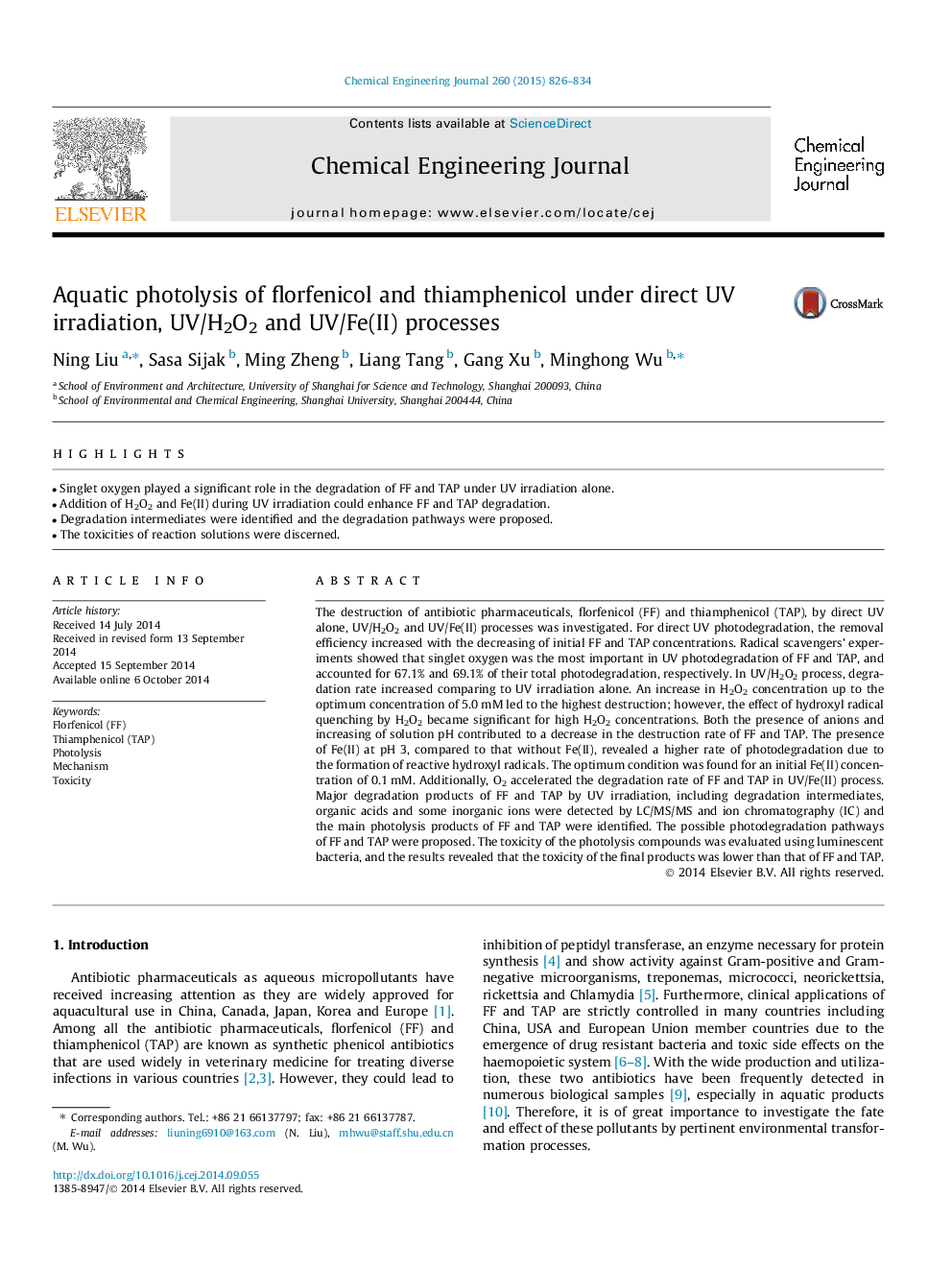| کد مقاله | کد نشریه | سال انتشار | مقاله انگلیسی | نسخه تمام متن |
|---|---|---|---|---|
| 146785 | 456378 | 2015 | 9 صفحه PDF | دانلود رایگان |

• Singlet oxygen played a significant role in the degradation of FF and TAP under UV irradiation alone.
• Addition of H2O2 and Fe(II) during UV irradiation could enhance FF and TAP degradation.
• Degradation intermediates were identified and the degradation pathways were proposed.
• The toxicities of reaction solutions were discerned.
The destruction of antibiotic pharmaceuticals, florfenicol (FF) and thiamphenicol (TAP), by direct UV alone, UV/H2O2 and UV/Fe(II) processes was investigated. For direct UV photodegradation, the removal efficiency increased with the decreasing of initial FF and TAP concentrations. Radical scavengers’ experiments showed that singlet oxygen was the most important in UV photodegradation of FF and TAP, and accounted for 67.1% and 69.1% of their total photodegradation, respectively. In UV/H2O2 process, degradation rate increased comparing to UV irradiation alone. An increase in H2O2 concentration up to the optimum concentration of 5.0 mM led to the highest destruction; however, the effect of hydroxyl radical quenching by H2O2 became significant for high H2O2 concentrations. Both the presence of anions and increasing of solution pH contributed to a decrease in the destruction rate of FF and TAP. The presence of Fe(II) at pH 3, compared to that without Fe(II), revealed a higher rate of photodegradation due to the formation of reactive hydroxyl radicals. The optimum condition was found for an initial Fe(II) concentration of 0.1 mM. Additionally, O2 accelerated the degradation rate of FF and TAP in UV/Fe(II) process. Major degradation products of FF and TAP by UV irradiation, including degradation intermediates, organic acids and some inorganic ions were detected by LC/MS/MS and ion chromatography (IC) and the main photolysis products of FF and TAP were identified. The possible photodegradation pathways of FF and TAP were proposed. The toxicity of the photolysis compounds was evaluated using luminescent bacteria, and the results revealed that the toxicity of the final products was lower than that of FF and TAP.
Journal: Chemical Engineering Journal - Volume 260, 15 January 2015, Pages 826–834